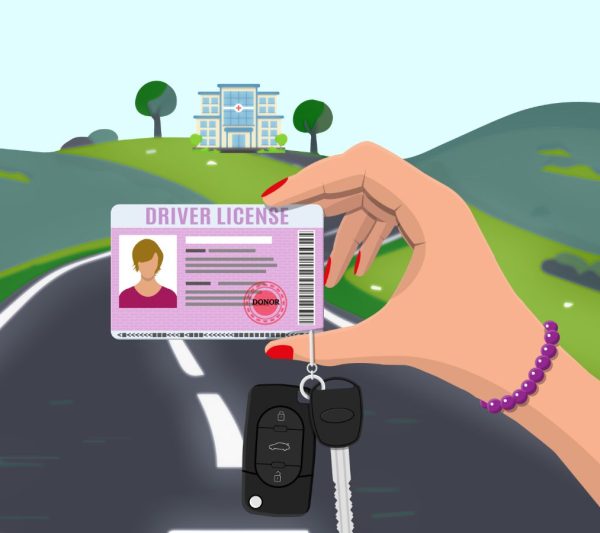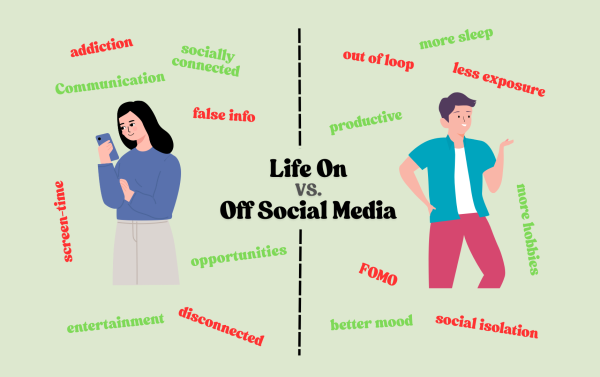Four Steps to Reduce Stress Immediately
The illustration describes a girl trapped within the depression of her own mindscape, unable to see the beauty of life all around her. The colors represent how bright and beautiful life can truly be, while also demonstrating how dark and depressing one’s own mind can become by corruption.
The emotion “stress” has been around since the beginning of time. Internally, when the body is in a state of stress, blood pressure rises, muscles tighten and heart rate increases.
When learning to manage stress, it is essential to know which category the stress falls under. There are three clinical categories of stress: Acute, Episodic, and Chronic.
Acute stress is known to be the most common and is typically experienced in a short amount of time due to important upcoming events. Episodic stress is often caused by excessive crisis and chaos, in addition to extended periods of pressure on oneself and others. Chronic stress usually begins in a stressful environment. People who experience chronic stress often feel trapped and unable to see the light at the end of the tunnel.
Students often feel hopeless in a trapped classroom environment and have no idea that they can visit the school nurse’s office when they feel overwhelmed. School Nurse, Kerry Coryell, has a variety of stress relievers in her office including: fidget toys, coloring, and a quiet area for students to decompress. Coryell and guidance counselors are available at all hours of the school day to make students feel comfortable and help manage their anxiety and stress.
“I have more students coming in here with anxiety than anything else unless it is flu season,” said Coryell.
During stressful episodes, there are several coping mechanisms to help individuals process and manage difficult situations.
Observe Physical Discomfort
Awareness of physical discomfort helps regulate corporeus tension. When an individual feels stressed, the human body sends destructive signals to the musculoskeletal, respiratory, cardiovascular, endocrine, gastrointestinal, nervous, and reproductive systems. When in a state of stress or anxiety, It’s important to ask mindful questions, such as “Are my muscles sore or tight?”, “Are my hands clenched?” and “Is my breathing shallow?”
Focusing on breathing helps to calm the body down. In a stressful situation, breathing helps distract an individual from whatever may be bothering their mind.
Practice Mindfulness
Practicing mindfulness helps to clear out anxious feelings, by being aware of the present moment. Humans tend to obsess over the future and the past rather than focusing on the present. When practicing mindfulness try not to get discouraged – it is difficult to attempt a new mental skill.
It’s important to pay attention to anxious feelings. “Instead, simply observe them as if from an outsider’s perspective, without reacting or judging,” said Lawrence Robinson, Melinda Smith and Jeanne Segal, writers of a non-profit guide to mental health and awareness, Help Guide. Worries tend to stay in the mind until they are expressed, so it’s crucial that they are not ignored.
“Whenever I’m in a stressful situation I calm myself down by watching a comfort show,” said Natalie Stoner, vice president of the Mindful Minutes club.
Be Aware Of How Others Affect You
Studies have shown that human emotions, whether positive or negative, can be contagious. Individuals’ mental states are impacted by the people they surround themselves with.
If someone is having a negative influence on an individual’s well-being, one may consider cutting back the time they spend with that person.
There are many resources that help students cut out time with energy-draining people, including guidance counselors, school nurses and online.
Ask Yourself If The Problem Is Solvable
In most cases, the problems that humans face are solvable. However, when the problems feel unsolvable, it is valuable to focus on the present moment. Individuals should think about what makes them the happiest and remember that the pain they are feeling now – won’t last forever.
Your donation will support the student journalists of San Juan Hills High School. Your contribution will allow us to cover our annual website hosting costs.

Madelyn Wapner is a junior at San Juan Hills High School, and this is her first year writing for The Express Newspaper. She is the social media editor,...





